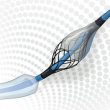Bicuspid Aortic Valves (VAV) are challenging for TAVR given its anatomical characteristics and the important presence of calcification. However, current data are promising. Even though traditionally excluded from the larger randomized studies, self-expandable valves appear to have similar evolution to tricuspid aortic valves (TAV) with severe stenosis. Researchers looked at the Low-Risk Bicuspid Study and...
Are Expandable-Balloon Valves an Option for the Bicuspid Valve in Low-Risk Patients?
Bicuspid aortic valve malformation is the most frequent cardiac malformation (about 1%), and a significant percentage of these cases generate severe aortic stenosis. As we know, transcatheter aortic valve replacement (TAVR) has been developed for tricuspid valves, which are studied in the most important randomized trials for high-, medium-, and low-risk patients. While current information...
Mexico Sessions 2021
The XLIV SOLACI Mexico Sessions 2021 were held on December 9, 2021 within the framework of the SOCIME 2021 Congress. The activity consisted of a module for doctors and another for technicians and nurses in hemodynamics and also had the participation of leading specialists from the entire region. SCIENTIFIC PROGRAM Take part in this extraordinary...
TCT 2021 | OPTIMUM: Surgically Ineligible Patients with Complex Anatomy: Do We Accept the Case?
In surgically ineligible patients with complex coronary anatomy short term risk of death with PCI is considerably lower than the estimated surgical risk. These are the outcomes of the OPTIMUM registry, presented during the TCT scientific sessions. The good short-term outcomes highlight the importance of trying percutaneous revascularization to treat complex patients. The current data...
ESC 2021 | RIPCORD-2: Routine FFR Evaluation of All Epicardial Vessels During Angiography
The predecessor of this research—RIPCORD, published in 2014—showed that using fractional flow reserve (FFR) changes the treatment strategy in about 25% of patients. That marked the rise of FFR. In fact, the DEFER, FAME, and FAME 2 studies offered results consistent with the original RIPCORD. In this research, authors tested the hypothesis of systematic use of...
Self-Expanding Valve in Extreme Surgical Risk After 5 Years
Patients with aortic stenosis and extreme surgical risk have extremely high mortality due to known comorbidities. The short-term benefit of transcatheter aortic valve replacement (TAVR) with self-expanding valve is clear, and it warrants the procedure in this challenging population. While elderly patients with comorbidities who are at extreme surgical risk might be eligible for TAVR,...
Post COVID-19 Persistent Symptoms: Far More Common than Expected
After the acute phase of COVID-19 infection, we commonly observe persistent symptoms that can alter functionality and quality of life. Persistent symptoms are those that continue at least 60 days after diagnosis or at least 30 days after recovery from the acute phase, or after discharge. Many of the studies included in this review have...
SOLACI/SIAC Latin American Clinical Guidelines on TAVR vs. SAVR Published
The Latin American Society of Interventional Cardiology is proud to announce that the Latin American Clinical Guidelines on TAVR vs. SAVR on patients with severe aortic stenosis have been published. This high-quality scientific work was published in the Heart BMJ Journal and is the result of an arduous joint effort between SOLACI (through its Research...
ELUVIA: DES in Complex Femoropopliteal Lesions
Paclitaxel-eluting stent Eluvia showed promising results after two years with a revascularization freedom rate of 80% despite the fact that these were complex femoropopliteal lesions. As the safety of paclitaxel-eluting devices becomes more consistent, more studies on its efficacy are being published. Back in 2018, the safety of paclitaxel-eluting balloons and stents was under scrutiny...
FLOWER-MI: FFR vs. Angiography for Complete Revascularization in Infarction
Functional assessment with fractional flow reserve (FFR) was not better than conventional angiography to guide complete revascularization in patients with multivessel lesions in a setting of ST-segment elevation myocardial infarction and successful primary angioplasty. These results were published in the New England Journal of Medicine (NEJM) and presented during the American College of Cardiology (ACC)...









